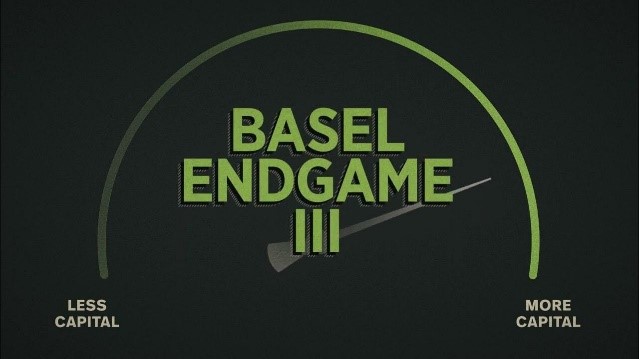





Disclaimer: Copyright infringement not intended.
Context
What is Basel III and why is it contentious?
Formation of Basel Committee:
Basel III Standards:
Proposed Changes and Implications
Response from Banks and Regulators
Expected Changes and Challenges Ahead
|
Understanding the Basel Accords The Basel Accords were developed over several years beginning in the 1980s. The BCBS was founded in 1974 as a forum for regular cooperation between its member countries on banking supervisory matters. The BCBS describes its original aim as the enhancement of "financial stability by improving supervisory knowhow and the quality of banking supervision worldwide." Later, the BCBS turned its attention to monitoring and ensuring the capital adequacy of banks and the banking system. The Basel I accord was originally organized by central bankers from the G10 countries, who were at that time working toward building new international financial structures to replace the recently collapsed Bretton Woods system. The meetings are named "Basel Accords" since the BCBS is headquartered in the offices of the Bank for International Settlements (BIS) located in Basel, Switzerland. Member countries include Australia, Argentina, Belgium, Canada, Brazil, China, France, Hong Kong, Italy, Germany, Indonesia, India, Korea, the United States, the United Kingdom, Luxembourg, Japan, Mexico, Russia, Saudi Arabia, Switzerland, Sweden, the Netherlands, Singapore, South Africa, Turkey, and Spain. Basel I The first Basel Accord, known as Basel I, was issued in 1988 and focused on the capital adequacy of financial institutions. The capital adequacy risk (the risk that an unexpected loss would hurt a financial institution), categorizes the assets of financial institutions into five risk categories—0%, 10%, 20%, 50%, and 100%. Under Basel I, banks that operate internationally must maintain capital (Tier 1 and Tier 2) equal to at least 8% of their risk-weighted assets. This ensures banks hold a certain amount of capital to meet obligations. For example, if a bank has risk-weighted assets of $100 million, it is required to maintain capital of at least $8 million. Tier 1 capital is the most liquid and primary funding source of the bank, and tier 2 capital includes less liquid hybrid capital instruments, loan-loss, and revaluation reserves as well as undisclosed reserves. Basel II The second Basel Accord, called the Revised Capital Framework but better known as Basel II, served as an update of the original accord. It focused on three main areas: minimum capital requirements, supervisory review of an institution's capital adequacy and internal assessment process, and the effective use of disclosure as a lever to strengthen market discipline and encourage sound banking practices including supervisory review. Together, these areas of focus are known as the three pillars. Basel II divided the eligible regulatory capital of a bank from two into three tiers. The higher the tier, the less subordinated securities a bank is allowed to include in it. Each tier must be of a certain minimum percentage of the total regulatory capital and is used as a numerator in the calculation of regulatory capital ratios. The new tier 3 capital is defined as tertiary capital, which many banks hold to support their market risk, commodities risk, and foreign currency risk, derived from trading activities. Tier 3 capital includes a greater variety of debt than tier 1 and tier 2 capital but is of a much lower quality than either of the two. Under the Basel III accords, tier 3 capital was subsequently rescinded. Basel III In the wake of the Lehman Brothers collapse of 2008 and the ensuing financial crisis, the BCBS decided to update and strengthen the Accords. The BCBS considered poor governance and risk management, inappropriate incentive structures, and an overleveraged banking industry as reasons for the collapse. In November 2010, an agreement was reached regarding the overall design of the capital and liquidity reform package. This agreement is now known as Basel III. Basel III is a continuation of the three pillars along with additional requirements and safeguards. For example, Basel III requires banks to have a minimum amount of common equity and a minimum liquidity ratio. Basel III also includes additional requirements for what the Accord calls "systemically important banks," or those financial institutions that are considered "too big to fail." In doing so, it got rid of tier 3 capital considerations. The Basel III reforms have now been integrated into the consolidated Basel Framework, which comprises all of the current and forthcoming standards of the Basel Committee on Banking Supervision. Basel III tier 1 has now been implemented and all but one of the 27 Committee member countries participated in the Basel III monitoring exercise held in June 2021. The final Basel III framework includes phase-in provisions for the output floor, which will start at 50% on Jan. 1, 2023, rising in annual steps of 5% and be fully phased-in at the 72.5% level from January 2028. These 2023 onward measures have been referred to as Basel 3.1 or Basel IV. IN A NUTSHELL, The Basel Norms, initiated by the Basel Committee on Banking Supervision (BCBS), serve as a comprehensive framework for international banking regulations. These norms are essential for harmonizing financial legislation globally and bolstering the resilience of the banking sector on a global scale. With representation from 27 countries, including India, the BCBS was established with the core objective of enhancing financial stability through the improvement of banking supervision practices. Over the course of several years, the committee has released three significant guidelines, namely Basel I, II, and III, each aimed at addressing various risks inherent in the banking and financial systems. Basel I, introduced in 1988, marked the inception of the Basel Accords and primarily focused on assessing the capital adequacy of financial institutions. It introduced the concept of categorizing assets into different risk categories and set forth a minimum capital requirement of 8% of risk-weighted assets. This accord laid the foundation for risk-based capital adequacy standards, with Tier 1 and Tier 2 capital forming the core components. Tier 1 capital, comprising equity and reserves, serves as the primary indicator of a bank's financial soundness, while Tier 2 capital consists of supplementary finance, providing additional support to the bank's operations. Building upon the principles established in Basel I, Basel II, released in June 2004, aimed to refine and enhance global banking regulations. It introduced a more sophisticated approach to risk management by establishing minimum capital requirements, improving risk assessment practices, and enforcing stricter disclosure regulations. Despite India's alignment with Basel II guidelines, its full implementation remains pending, presenting challenges and opportunities for the country's banking sector. In response to the 2008 financial crisis, Basel III was introduced in 2010, with a focus on further strengthening the resilience of banks and mitigating systemic risks. Notable provisions of Basel III include the introduction of leverage and liquidity ratios, such as the Liquidity Coverage Ratio (LCR) and Net Stable Funding Ratio (NSFR), aimed at addressing short-term and medium-term liquidity risks. These regulations aim to ensure that banks maintain adequate capital buffers to withstand economic downturns and financial shocks effectively. The implementation of Basel III in India, originally scheduled for March 2019 but postponed due to the COVID-19 outbreak, remains a significant milestone for the country's banking sector. While the extension provides temporary relief to banks, particularly regarding capital requirements related to Non-Performing Assets (NPAs), it also underscores the importance of aligning with international standards to enhance financial stability and promote sustainable economic growth. Basel III norms have introduced strong capital ratios by increasing the minimum Tier 1 capital from 4% to 6%, and minimum Common Equity Tier 1 capital from 4% to 4.5%. Bank’s regulatory capital is divided into Tier 1 and Tier 2. Tier 1 capital is subdivided into Common Equity Tier 1 and additional Tier 1 capital. There is the highest level of subordination in security instruments of Tier 1 capital. a. Common equity Tier 1 capital includes equity instruments that carry discretionary dividends and no maturity. b. Additional Tier 1 capital consists of securities that are subordinated to most subordinate debt, with no maturity date, and dividends that can be cancelled at any time. c. Tier 2 capital consists of unsecured subordinated debt with a maturity of at least five years. The bucketing method is used to group banks according to their size and importance in the economy. To ensure there is sufficient liquidity during a financial crisis, Basel III norms specify safeguards against excessive borrowings by banks. Basel III norms are meant to make banks more resilient and reduce the risk of shocks from global banking issues. Basel III specified tighter capital requirements as compared to Basel I and Basel II. |
SOURCE: THE HINDU
|
PRACTICE QUESTION Q. Explain the importance of Basel norms in maintaining global financial stability, emphasizing the evolution and key provisions of Basel III. Analyze the challenges associated with implementing these norms, especially regarding their impact on economic growth. |







© 2025 iasgyan. All right reserved